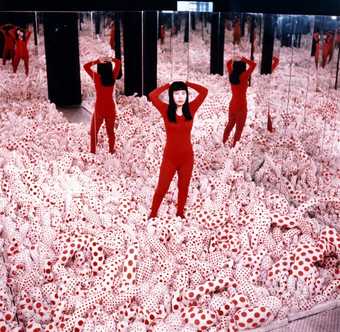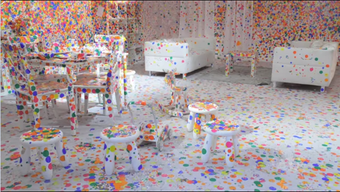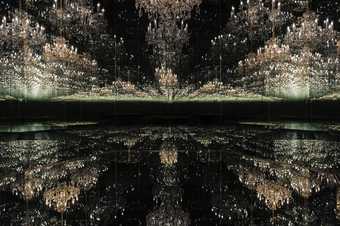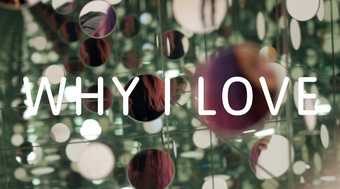[Yayoi Kusama]: My wish was to be a painter one day. So I started painting a lot of pictures from the age of 10. My mother told me that I was not allowed to paint, that one day, I would have to marry someone from a rich family and become a housewife. When I was a girl, she took away all my inks and canvases.
[Francis Morris, Curator Yayoi Kusama, Tate 2012] : Making art was something that she seems to have done in opposition to her family but she also was innately talented. You look at the early drawings and they are completely exquisite. The challenges to become an accomplished artist in a Japanese provincial milieu must have driven this notion that, at some point, she would have to escape.
She was on a train to stardom, she knew exactly what she wanted to do. She had a suitcase full of drawings and she set about selling herself.
[Yayoi Kusama]: When I first arrived in New York, I went to the top of the Empire State Building. Seeing this big city, I promised myself that one day I would conquer New York and make my name in the world with my passion for the arts and mountains of creative energy stored inside myself.
[Francis Morris]: When she first came to New York, it was a man's world. The art world was aggressively male. It was a cut-throat period. I think it was very difficult to be a woman artist.
[Yayoi Kusama]: In New York, I devoted myself to my work. I drew everyday and started painting ‘nets’. Eventually the canvases were up to 33 feet long and I painted ‘nets’ from dawn to dusk. When I was drawing, the pattern would expand outside of the canvas to fill the floor and the wall. So when I looked far away, I would see the hallucination, and I would get surrounded by that vision. That is how I became an environmental artist.
[Richard Castellane, Former Owner of the Castellane Gallery]: She was taking away your ability to focus breaking all boundaries of space and the exhibitions that I had, in particular the 'Peepshow' that did the job.
It was an octagonal room, it was painted black and there were openings where you could stick your head in. The ceiling of it set up a series of lights. The rhythm of that machine was, brrrrr, faster and faster.
Up till Kusama, there were many artists from the Renaissance on, who were involved with perspective and infinity but it was all a fake because you knew, you were the viewer you were always aware that you were the master.
That it was a painting that was encompassed by a frame and the artist was playing with space but it wasn’t enveloping you.
[Yayoi Kusama]: Obsessions, phallus obsessions, obsessions of fear, are the main themes of my art. Accumulation is how the stars and the earth don’t exist alone, but rather the entire universe is made of an accumulation of the stars. It is just like when you see the flowers, I see the flowers everywhere and there are so many, and I feel panicked and become so overwhelmed that I want to eat them all. Eventually, I began to feel ill, because I painted too much. [Exhausted, I returned here [Japan].
[Francis Morris]: To go back to Tokyo and to start from scratch again for Kusama was quite extraordinary because she wasn’t known there, and she hadn't been recognised. Clearly, the strains and stresses of life, the memories, forced her to withdraw.
But what she's always done, she has always managed that process incredibly well. Kusama is now living in a mental institution but, by day, she occupies across the street in a busy suburban neighbourhood of Tokyo a very well-appointed studio facility where she has a team of assistants.
She has a space for painting, she has a space for a library, her archive and every morning she gets there and she's the consummate professional and she works from nine till six. I think there's a sort of managing madness about Kusama, which is so utterly sane which is really interesting.
She's used her trauma; she's used these experiences in her past she's been able to harness experiences that might drive other people insane to enormously productive ends. She's an extraordinary person in that way.





